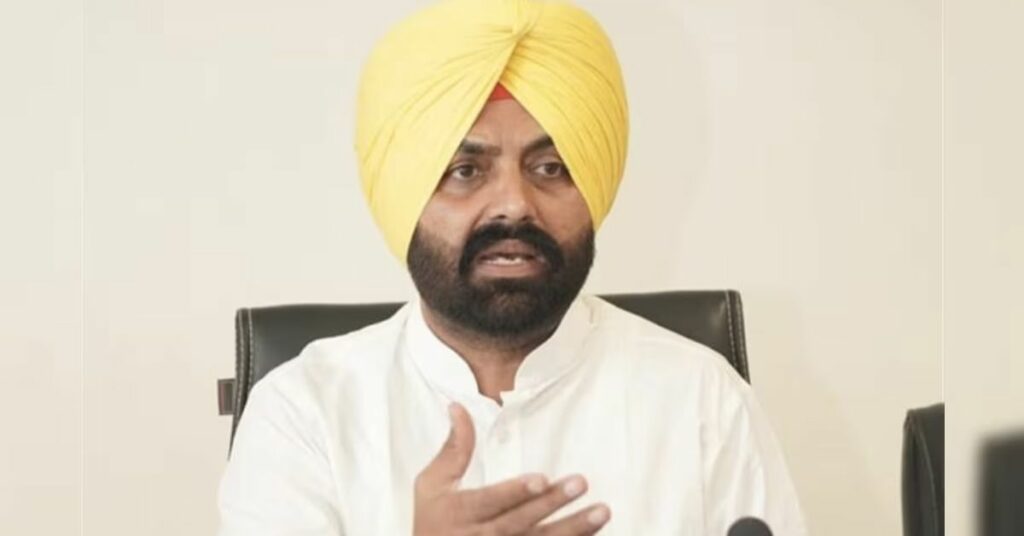In a striking statement that has sparked a mix of controversy and debate, AAP Punjab Cabinet Minister Laljit Singh Bhullar recently suggested the potential merger of Haryana and Himachal Pradesh into Punjab. This idea, rooted in the resolution of the longstanding Syl Canal issue, proposes a radical redrawing of state boundaries in India. While the suggestion is novel in the current political climate, it harks back to a pre-partition era when these regions were part of a larger Punjab province.
The Central Government should consider incorporating Haryana and Himachal Pradesh into Punjab. Responding to the Syl issue, AAP Punjab Cabinet Minister Laljit Singh Bhullar suggested that if Haryana becomes part of Punjab, many issues would be easily resolved. He also added that… pic.twitter.com/u6MF1E8Ent
— Gagandeep Singh (@Gagan4344) December 28, 2023
Historical Context
To understand the implications of such a suggestion, it’s crucial to revisit the historical partitioning of Punjab. Post-Independence, Punjab underwent significant territorial changes. The Punjab Reorganisation Act of 1966 carved out Haryana and Himachal Pradesh as separate states to meet the linguistic and cultural demands of the region. This partition, though primarily linguistic, had profound political, social, and economic ramifications.
The SYL Canal Dispute: A Trigger Point
The SYL (Sutlej-Yamuna Link) Canal issue, a long-standing dispute between Punjab and Haryana, is central to Bhullar’s proposition. The canal, designed to share river waters between the states, has been a contentious point since its inception. Bhullar’s statement suggests that merging these states could provide a straightforward solution to this intricate problem by eliminating inter-state water disputes.
Feasibility and Challenges
The proposal, while intriguing, raises several questions about its feasibility. Merging states with distinct identities, cultures, and administrative systems is a complex process requiring constitutional amendments and widespread consensus among the involved parties. Furthermore, such a merger could lead to new administrative challenges and potential cultural and political conflicts.
Potential Benefits
On the flip side, the merger could potentially streamline governance and resource allocation. Unified administration may lead to more cohesive development strategies and efficient resource management, especially concerning water sharing and infrastructural projects.
Public and Political Reactions
The reaction to Bhullar’s statement has been mixed. While some see it as a bold move towards solving protracted issues, others view it as impractical and politically motivated. The proposal has certainly reignited discussions on state boundaries, linguistic divisions, and resource sharing in India.
It’s a great thought; there should be no objection to it. India is one, and if Punjab and Haryana unite again, there should not be any objection to that. We can establish the modalities by sitting together,” said Haryana CM Manohar Lal Khattar, responding to the statement made by… pic.twitter.com/IjET3RrnrN
— Gagandeep Singh (@Gagan4344) December 28, 2023
Read more article
- Accusations Rock Punjab Politics: Bhagwant Mann’s Daughter Opens Up About Alleged Abuse!!
- The Intriguing Case of Lucky Sandhu: A Punjab Youth Congress Leader’s Jail-Time Wedding Dance
Conclusion: Looking Ahead
While the suggestion to merge Haryana and Himachal Pradesh with Punjab is currently more theoretical than practical, it opens up a dialogue about rethinking state boundaries in the context of contemporary challenges. As India continues to evolve, such discussions are crucial for its political and socio-economic development. However, any move towards redrawing state boundaries must be approached with caution, considering the vast implications for the country’s federal structure and regional dynamics.
This article provides a nuanced overview of the situation, encapsulating historical backgrounds, potential challenges, and diverse viewpoints on this complex and multifaceted issue.

